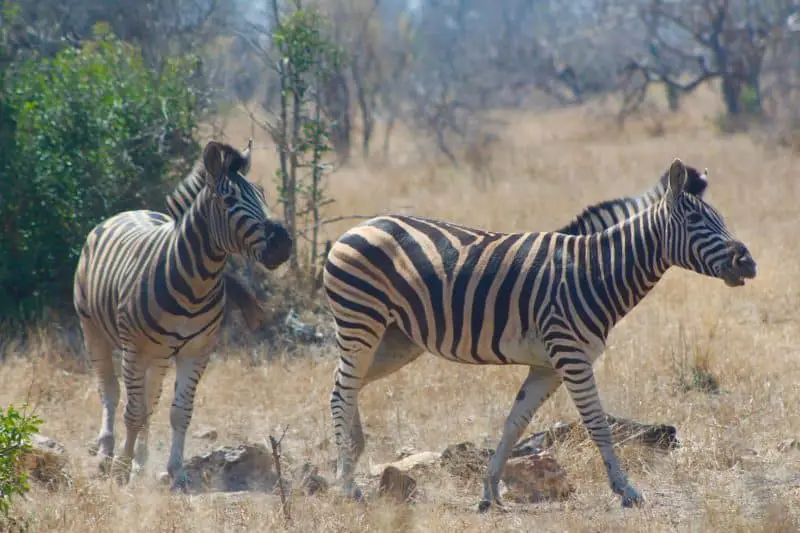Have you ever heard about the Kruger National Park?
Or even luckier- have you ever been yourself? This is one of South Africa’s national treasures. A spectacular piece of land totally protected and roamed by Africa’s most incredible animals.
The Big 5, amongst many more, reside in this wild and wonderful place. Additionally the diverse fauna and flora bring in almost a million visitors annually.
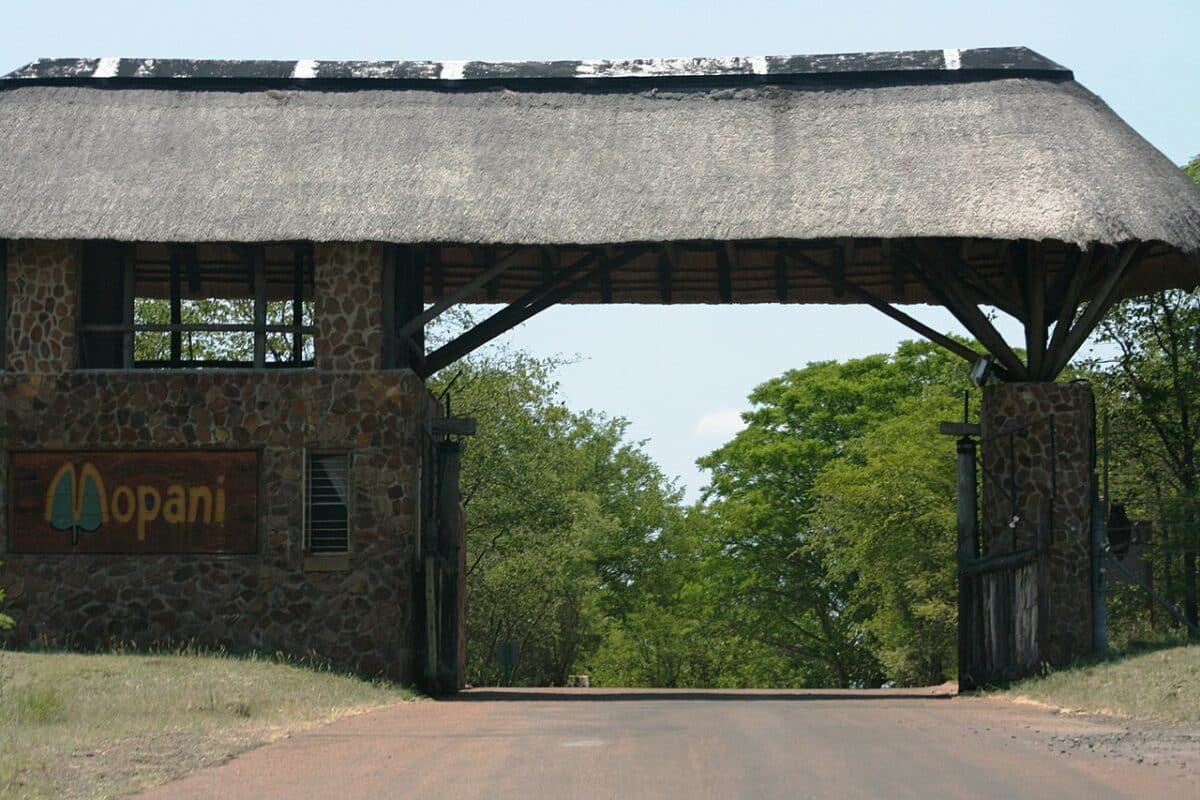
The Kruger National Park is approximately the size of the whole of Wales which measures to 1,948 528 million hectares. It covers both the Mpumalanga and the Limpopo Provinces in the northern parts of South Africa. Itoffers the visitor an exhilarating and up-close wildlife experience.
Is this somewhere you’re itching to go and experience yourself? Read below to find out more about the special rest camps you can visit and more!
key points
| Camp | Location | Features and Highlights | Operators |
|---|---|---|---|
| Skakuza | Hub of Kruger, largest rest camp, Skakuza Airport, wildlife visible from planes | Conservation fee, game lodges pick-up, car hire for self-viewing, SANParks headquarters, strict regulations, rondavel accommodations, cultural influence in hut shapes, mischievous monkeys, Lake Panic birdwatching point | SANParks, Nkambeni, Lion Sands River Lodge, Skukuza Rest Camp |
| Satara | Around 90 km from Skakuza, known for lions, leopards, cheetahs | Fertile grazing land, attracts antelope herds, abundant big cats, Honeybadger, bush barbecues, traditional dances, Open Air Theatre, good bird watching, Sweni Bird Hide, Montagu’s and pallid harrier bird spotting, restaurant. | SANParks, Nkambeni, Lion Sands River Lodge, Satara Camp |
| Lower Sabie | Along Sabie River, soothing views, sycamore fig trees, rich wildlife | Leopard, Hippopotamus, Lion, Goliath Heron, Giant Kingfisher, unexpected animal activity, restaurant on the river. | SANParks, Nkambeni, Lion Sands River Lodge, Lower Sabie Camp |
| Olifants | On a hill overlooking Olifants River, diverse vegetation, abundant game | Leopard, Elephant, Lion, Hippopotamus, Goliath Heron, Giant Kingfisher, lookout platform, immersive game walks, bush braais, tusks of famous Elephants at Leta, hot and balmy summer months. | SANParks, Nkambeni, Lion Sands River Lodge, Olifants Rest Camp |
| Pretoriuskop | South-western corner, granite outcrops, red trees, oldest rest camp | Sable Antelope, Lichtenstein’s Hartebeest, Wild Dog, Kudu, Brown-headed Parrot, Shabeni Hill granite dome, nostalgic exotic flowering plants, oldest rest camp, rich sense of the past. | SANParks, Nkambeni, Lion Sands River Lodge, Pretoriuskop Rest Camp |
Where to begin?
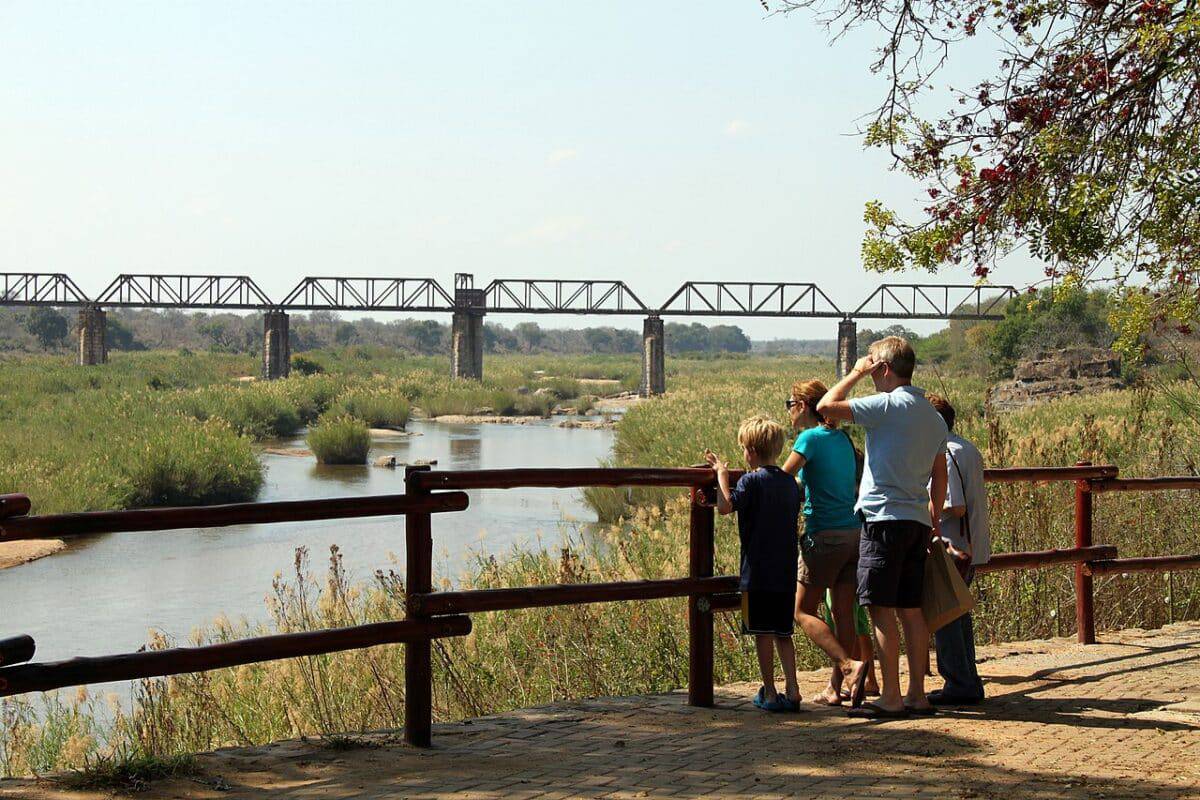
The hub of the Kruger National Park and the biggest rest camp is called Skakuza. There is a small airport called the Skakuza Airport, with a landing strip suited for small planes.
Once you land you immediately get a sense of excitement and can usually spot amazing animals from the plane. As soon as you step out of the plane the wilderness is clear and exciting!
From the airport, visitors usually get picked up by their game lodges accommodation (if you’ve gone that route). You can also hire a car to do your own viewing and travel within the Kruger.
Upon arrival one also has to pay a conservation fee- this is for the upkeep and safety of the National Park.
If you wish to make your dream of exploring the Kruger a reality, these operators can make that a reality for you!
Skukuza Rest Camp
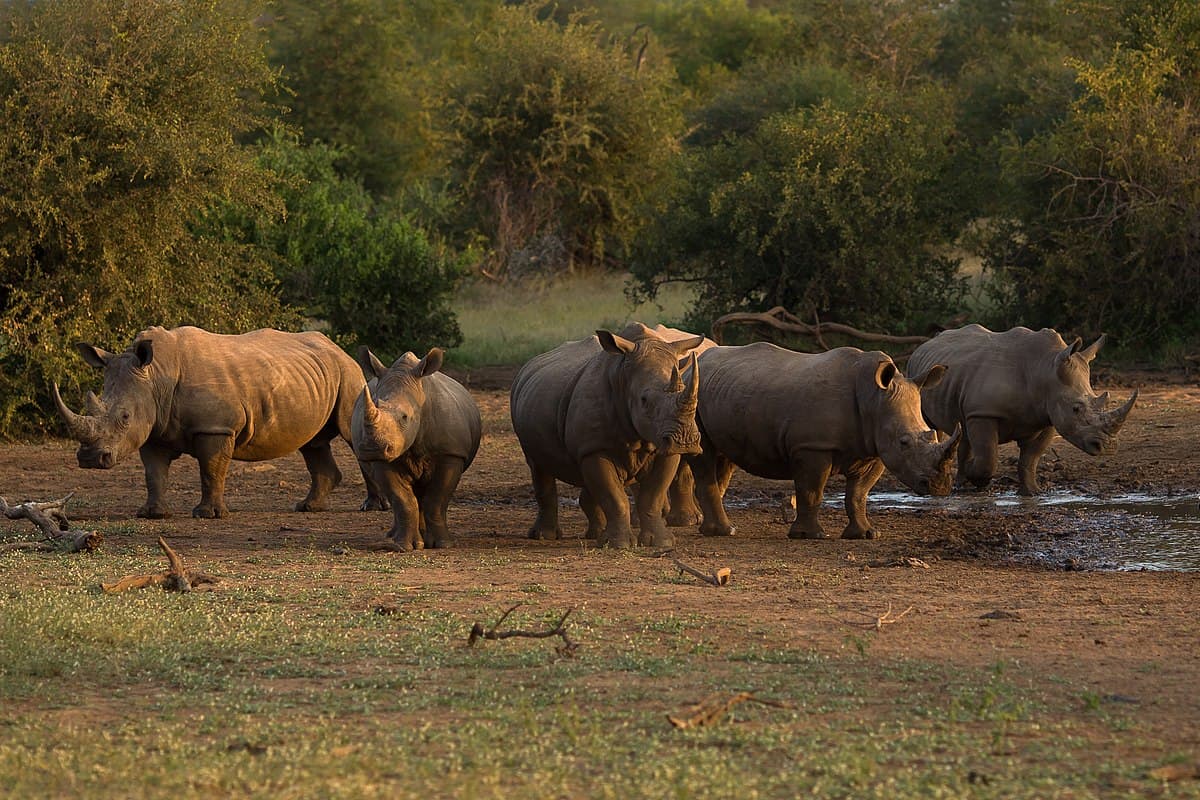
Skukuza, as previously mentioned is the Kruger National Park’s largest rest camp and administrative headquarters.
This camp serves as the ‘headquarters’ for the Kruger. It is from here you can enjoy a meal and their restaurants. Here you can consult the SANParks (South African National Parks) officials about any queries and concerns.
There are also various permits and passes you must obtain from here. Whether you’re hiring a car to do your game drives or with a guided tour, there are stringent regulations to follow for your safety and the animal’s safety.
Entry and exit of the camps in relatively strict. There are severe penalties for not meeting the curfew of the camps internally. No one is permitted to do independent night drives- as it is far to dangerous. However, guided tours with special permission occur every evening and one can do so with a permitted company.
Skakuza rests on the Southern Banks of the Sabie River, surrounded by lush foliage and tall trees. The camp offers diverse activities, facilities, animals, and plants within and in the surrounding areas.
While strolling, beware of mischievous monkeys and keep an eye out for rare bush babies. Skakuza, the largest rest camp, provides a cultural experience with round accommodation sites, reflecting the local belief that corners invite evil spirits—hence the round huts and rondavels.
5 Things To look for
- Fruit Bat
- Thick–tailed Bush Baby
- Warthog
- Spotted Hyena
- Purple–crested Lourie
These are all very lucky to spot, and some break into the camp itself, but mostly one can spot these cute five in the surrounding area and in trees. In the case of the hyena- this certainly won’t be in the camp itself- not to worry.
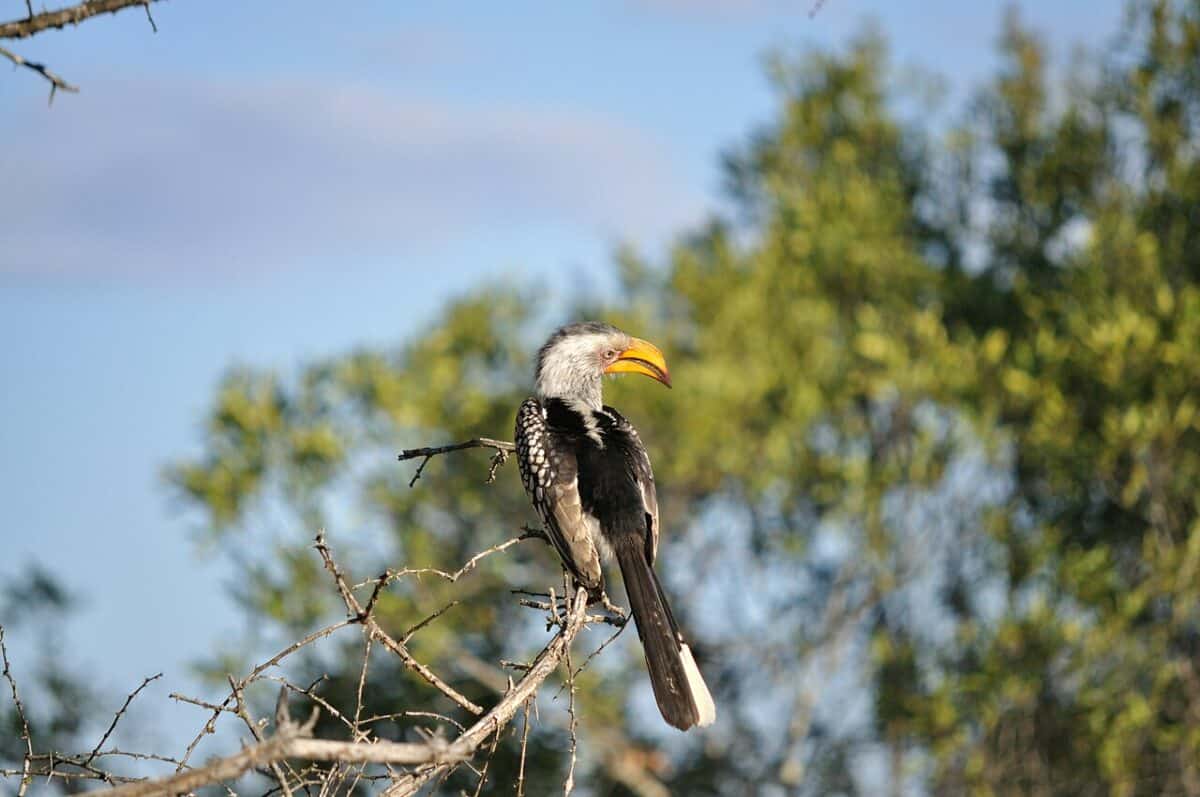
Just a mile away from the Skakuza camp is a birdwatching point for the avid bird watchers. Its an amazing site called Lake Panic. From here you can enjoy the wildlife that all gathers around this lake. Birds mostly seek comfort here, however, crocodiles, terrapins and hippos are also regulars in this location.
Satara Rest Camp
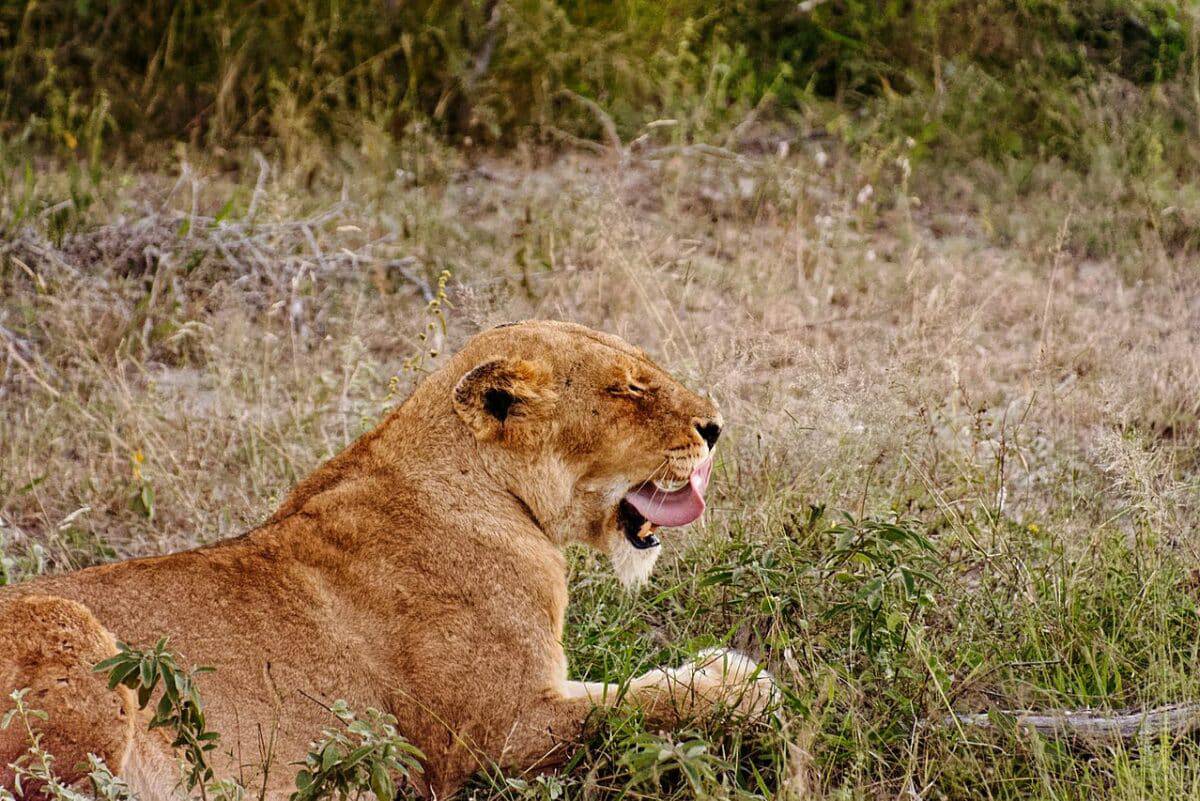
Satara Camp, known as the ‘cat camp,’ is a hotspot for incredible wildlife viewing in the Kruger National Park. Nestled about 90 kilometers from Skakuza, it boasts a rich diversity of large cats, including lions, leopards, and cheetahs. The fertile grazing land surrounding Satara attracts vast herds of antelope, creating a prime hunting ground for these magnificent predators.
In addition to the big cats, Satara is teeming with general game such as blue wildebeest, zebra, waterbuck, giraffe, and the ever-present impala. The camp also offers opportunities to spot rhinos, buffaloes, and elephants. Keep an eye out for smaller wonders like the elusive honey badger and the fascinating nocturnal activities of spotted hyenas and fruit bats.
Satara’s unique charm lies in its ‘wild’ atmosphere, making it a special destination for wildlife enthusiasts. The camp hosts various activities, from bush barbecues to traditional dances, and even features an Open Air Theatre for visitors to enjoy. For bird watchers, the Sweni Bird Hide nearby provides excellent opportunities.
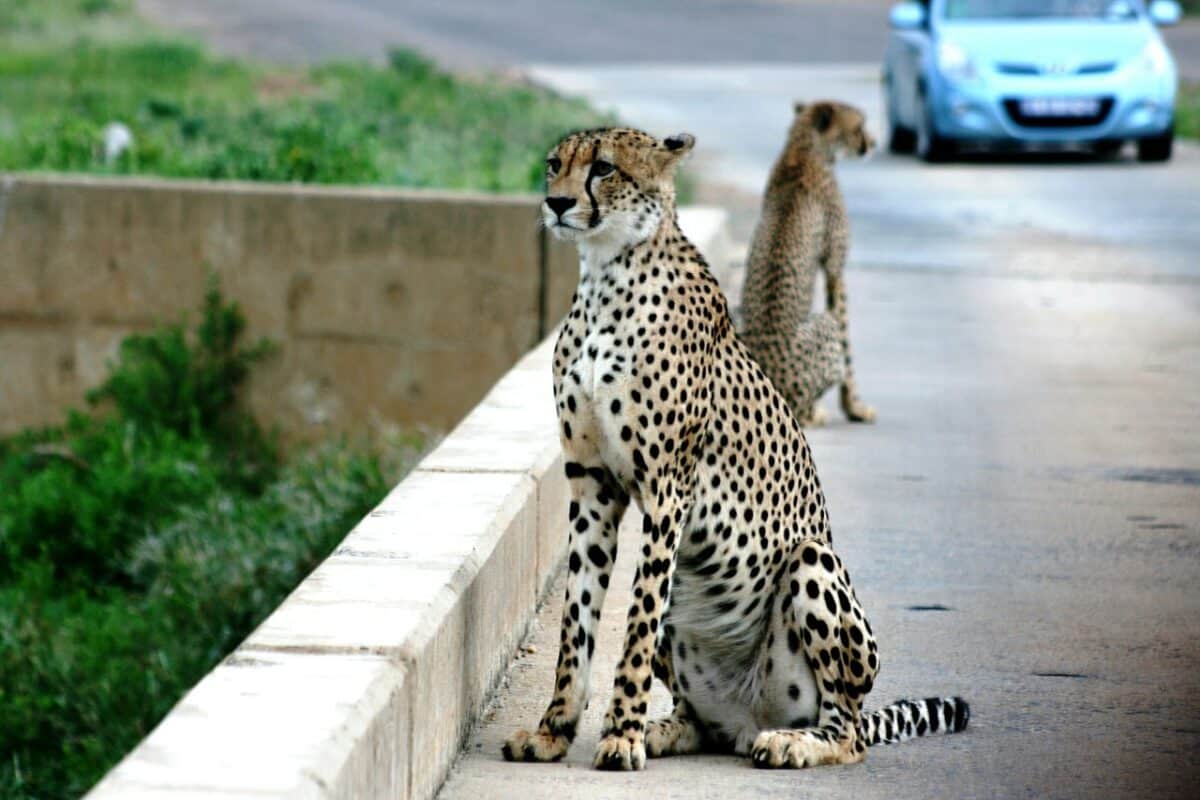
The Muzadzeni area and the 5100 route east from Satara Camp are known hotspots for spotting large cats, especially during the dry winter months when lions and leopards lie in wait to ambush thirsty antelope near water sources. Although lacking major rivers, Satara has well-developed watercourses, including three dams and six waterholes, offering ample chances to encounter the Big Five.
Satara Camp also provides thrilling nighttime experiences with guided night drives, offering insights into the secretive nocturnal activities of Kruger’s creatures. Guided bush walks, led by experienced field guides for groups of up to eight people, offer an intimate connection with the bush. Note that if you decide to walk at night, use a torch responsibly to avoid disturbing the animals. Satara Camp truly stands out as a haven for wildlife enthusiasts seeking an unforgettable South African safari experience.
Birding
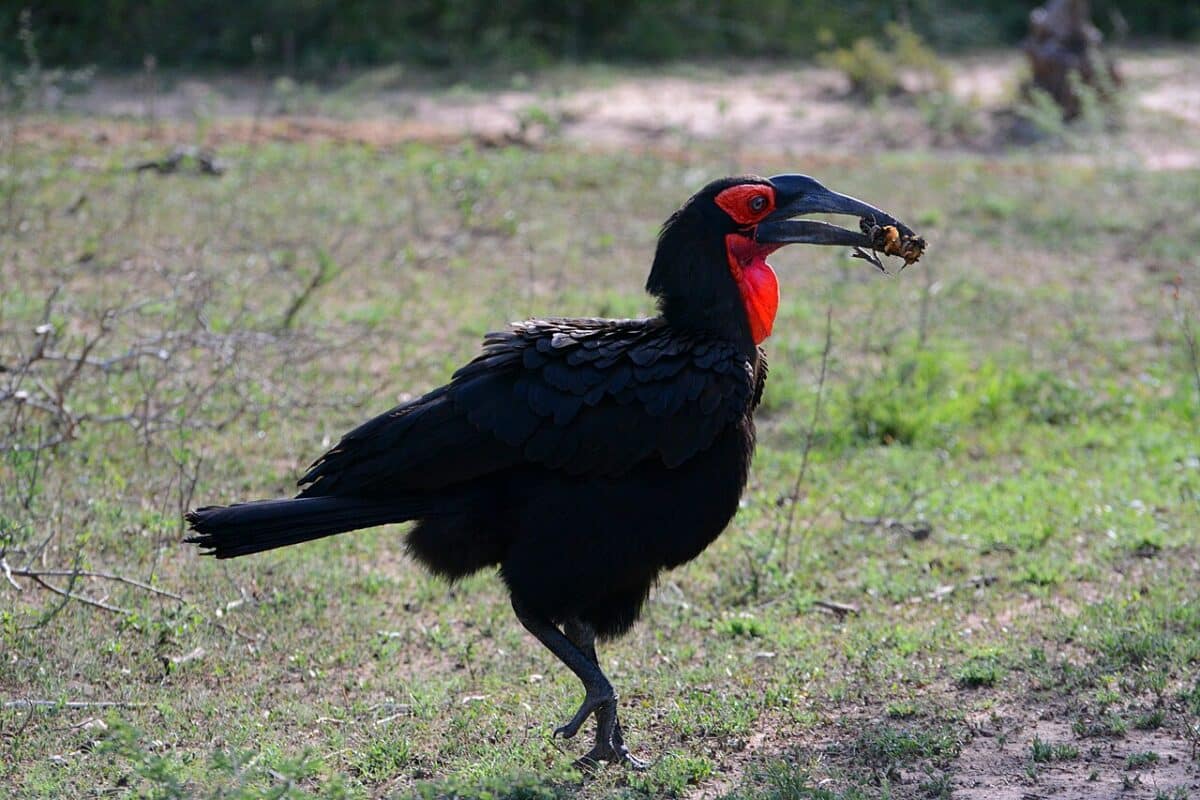
At Satara, just like in other camps, you’ll discover a vibrant community of resident birds. Among them, the Red-billed buffalo weaver, glossy and greater Blue-eared starlings, along with Burchell’s starling and the mourning dove, add a delightful touch to the camp’s atmosphere. As night falls, the giant eagle, barn owl, scops owl, and pearl-spotted owl create a symphony of sounds and sights.
Venturing into the open plains north of the camp provides a rewarding opportunity to spot Montagu’s and pallid harrier during a South African safari.
In the summer, when the rains have been generous, the high water levels can temporarily reduce bird activity. Nevertheless, it becomes an ideal time to catch a glimpse of the Blue-cheeked bee-eater, a frequent visitor during this season.
If you’re on the lookout for specific wildlife encounters, here are five things to seek:
- Red-billed Buffalo Weaver
- Lion
- Giraffe
- Blue Wildebeest
- Honeybadger
For those who prefer a break from cooking, Satara Camp offers a convenient restaurant where you can unwind and enjoy a meal served to you. Overall, Satara is a prime destination to visit if you’re seeking a harmonious blend of nature, wildlife, and relaxation.
Lower Sabie
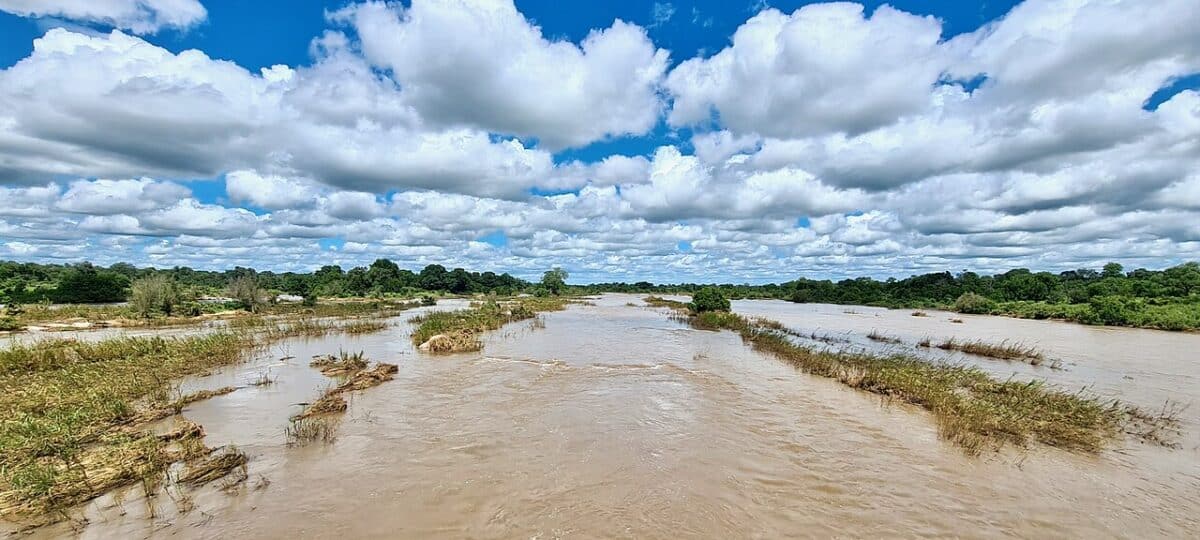
Lower Sabie is a camp which runs alongside the Kruger National Park, offering a serene landscape that captivates visitors. Gazing toward the river and the distant Lebombo Mountains, one can’t help but feel a sense of tranquility that comes with this picturesque scene.
This rest camp beautifully showcases nature’s abundance, notably represented by the prominent sycamore fig trees. These majestic trees serve as a vital resource for various birds and insects, offering sustenance through their abundant fruit production. Furthermore, the sight of animals gathering at the Sabie River emphasizes our place in the ongoing cycle of life.
5 Things To Seek
- Leopard
- Hippopotamus
- Lion
- Goliath Heron
- Giant Kingfisher
When visiting this camp, expect the unexpected. The amount of animals in the area are so exciting. As a rule of thumb in an river area in the Kruger there is bound to be some activity. There is also an unbelievable restaurant on the river which will certainly provide an amazing meal for you.
Oliphants
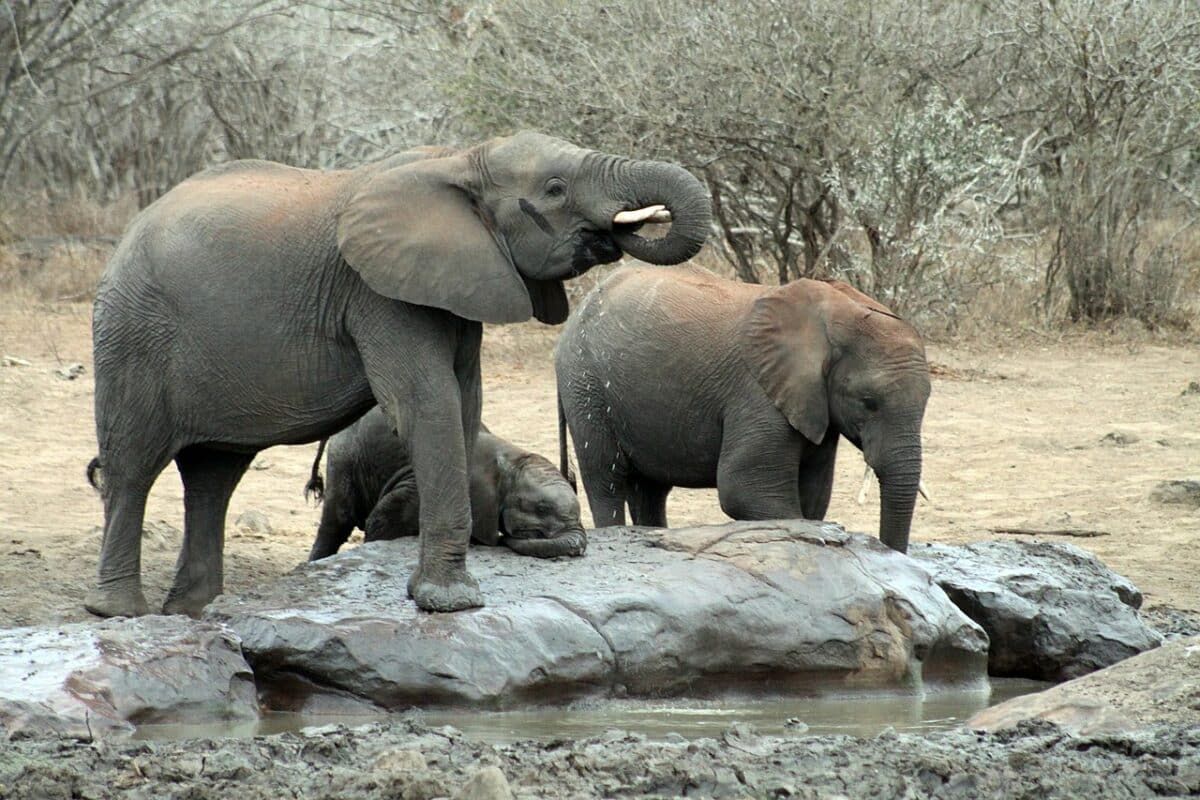
Visitors to Olifants will experience an unforgettable window into Africa. This camp, perched atop a hill towering several hundred feet over the Olifants River, provides panoramic views from lookout platforms, akin to how a soaring eagle surveys the landscape while hunting from the skies.
Nestled in a transitional zone, Olifants Camp features two distinct types of vegetation, fostering a diverse habitat for a wide range of game. To the north, low-lying Mopane trees offer cover for Zebra, Impala, Kudu, and Elephant. On the southern side, rolling plains showcase the majestic presence of Buffalo, Giraffe, and Kudu.
Thrilling game-viewing and sightseeing excursions along the Olifants River in Kruger Park reveal wildlife such as Lions, Crocodiles, and Hippopotamus, accompanied by an abundance of birdlife, including Owls, Storks, and Eagles.
To enhance the experience, Olifants Rest Camp provides a shaded lookout platform for immersive game viewing. From your Kruger Park accommodation, you can practically guarantee sightings of Hippopotamus, Crocodiles in the Olifants River, and the occasional Lion kill.
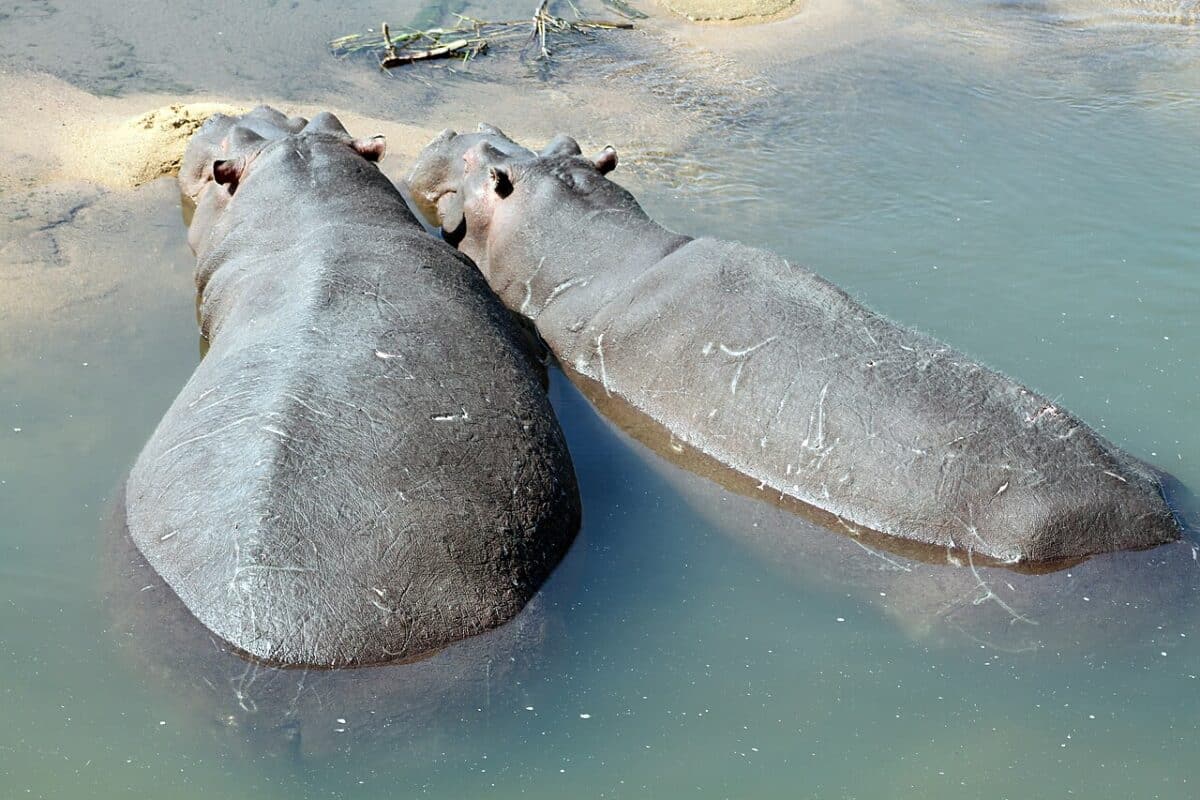
Embark on guided game walks around the Olifants River to intimately connect with the bush. Indulge in morning or evening bush braais (barbecues), letting the warmth of a campfire enhance your experience of Kruger Park nightlife. Olifants Camp, like the other Kruger Park accommodation facilities, welcomes visitors year-round. However, be prepared for hot and balmy summer months, occasionally reaching 40°C, punctuated by refreshing sporadic thunder showers.
The name ‘Olifants,’ derived from Afrikaans word meaning Elephants, is fitting as these majestic creatures are commonly found in the area. One of the Kruger National Park attractions is the tusks of six famous Magnificent Seven Elephants, once displayed at the reception and now located at Letaba.
5 Things To Seek
- Elephant
- Lion
- Hippopotamus
- Nile Crocodile
- Martial Eagle
Pretoriouskop
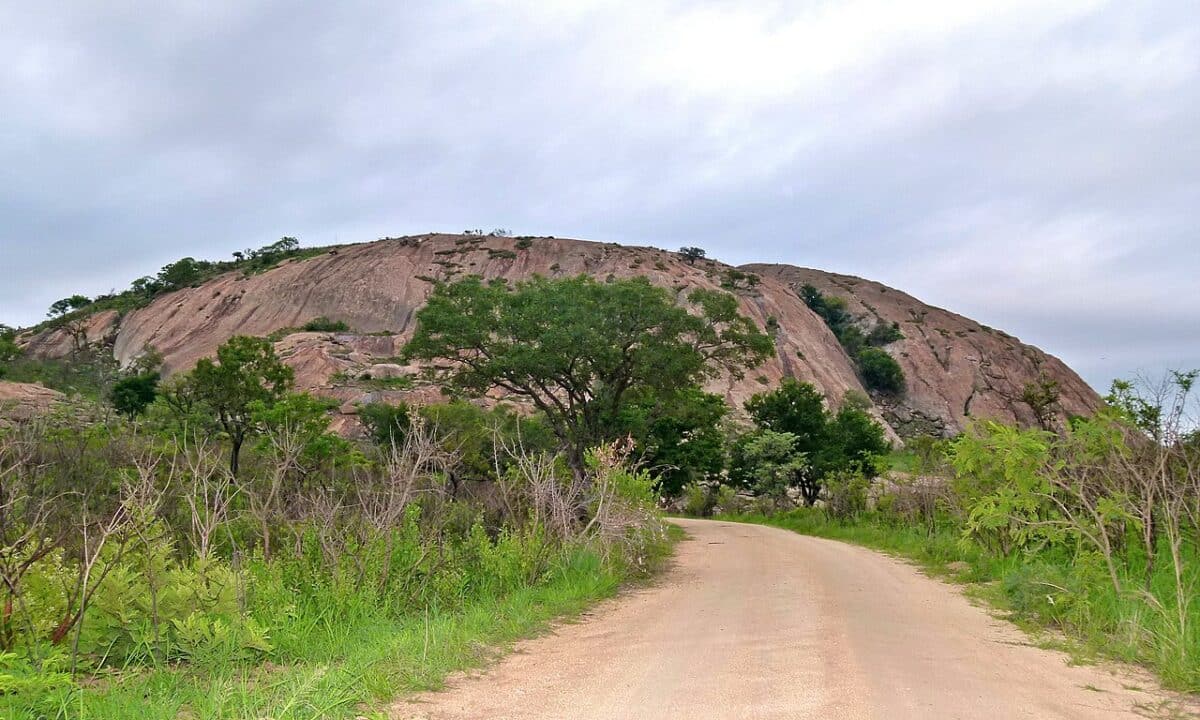
Some 3,500 million years ago, molten rock forcefully penetrated the earth’s crust and solidified, shaping the spectacular granite outcrops that now cradle Pretoriuskop Rest Camp. The camp, located in the south-western corner of the Kruger National Park, boasts the impressive granite dome known as “Shabeni Hill,” which is not far away.
Any visitor immediately recognizes Pretoriuskop’s uniqueness as brilliant red trees adorn the camp. This predates the decision to use indigenous plants exclusively in designing rest camp gardens. An exception to this rule was made for Pretoriuskop, the Kruger National Park’s oldest rest camp, allowing unique flowering plants to remain. This exception adds to the camp’s pervasive sense of the past, prompted by nostalgia.
5 Things To Seek
- Sable Antelope
- Lichtenstein’s Hartebeest
- Wild Dog
- Kudu
- Brown-headed Parrot
Summary on Kruger National Park
Overall, the Kruger is the most unbelievable place to visit. These are merely some of the parks camps. But one cannot exclude the other places within the Kruger that contain the most incredible scenes.
To get inspired by the endless opportunities of animal encounters available in the Kruger, have a look at Nature Travel Kruger tours.
If you enjoyed this blog you may enjoy reading about Leopards and Cheetahs .
Frequently Asked Questions
The entrance fees for Kruger National Park can vary based on factors such as nationality, the type of accommodation, and the duration of your stay. It is recommended to check the official SANParks (South African National Parks) website or contact them directly for the most up-to-date information on entrance fees.
Kruger National Park is located in northeastern South Africa, and it spans the provinces of Mpumalanga and Limpopo. The park’s main entrance gates are situated near various towns, including Nelspruit, Phalaborwa, Hoedspruit, and Malelane. The town closest to the southern entrance is Malelane.
Beauty is subjective, and different areas of Kruger National Park offer unique landscapes and wildlife experiences. Some visitors find the central region around Satara and Olifants camps to be particularly scenic, while others enjoy the diverse ecosystems found in the southern or northern sections. The park’s beauty lies in its variety, ranging from savannahs and woodlands to rivers and hills.
Yes, visitors are allowed to drive through Kruger National Park. The park has an extensive network of well-maintained roads, including both tarred and gravel roads. Self-driving is a popular option for exploring the park, and there are also guided game drives available for those who prefer a more structured safari experience.
Kruger National Park offers various guided tours catering to different interests and preferences of visitors. Some of the guided tours available within the park include: Bush Walks, Bird Watching Tours, Cultural Tours and Wildlife Photography Safaris.
- Top 5 Rarest Animals in the World - April 15, 2024
- Mongoose Meets One Of The Deadliest Snakes Alive - April 8, 2024
- Watch: Komodo Dragon Swallows Baby Goat In Seconds - March 28, 2024

